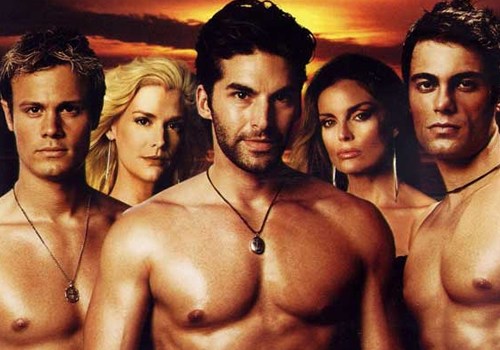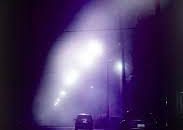Grue’s Gay Pride Month, Interview with Sam Irvin (Dante’s Cove)!!
Today for Grue’s Gay Pride Month, we have a very special guest. He is the guy who made the popular gay horror series Dante’s Cove. He is a television director, producer, screenwriter, actor, author, and film teacher. He also is known for Elvira’s Haunted Hills. He directed and co produced From Here on OUT and the first season of My Sister is so Gay. Co-Executive produced the film Gods and Monsters. Please welcome our special guest for Gay Pride Month, Dante’s Cove’s Sam Irvin:
.
.
.
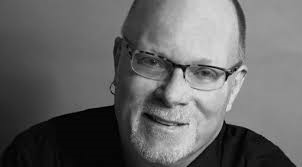
.
HELLTER: What drew you to horror and made you fall in love with it?
SAM: My dad owned movie theaters in North and South Carolina so I grew up watching movies of all kinds. Initially, I was drawn to horror movies the most because I loved the thrill of being scared – and I found monsters fascinating. In many ways, I was your typical Monster Kid who grew up watching all the classic Universal horror movies on TV; seeing Hammer Films and Vincent Price movies first-run in cinemas; and voraciously reading every issue of Famous Monsters of Filmland. But there was also another underlying reason I was so enamored with the genre. As a closeted gay kid who felt like an outsider and a freak of nature, these movies spoke to me in profound ways I would not fully comprehend until many years later. I identified with them. My favorite movie back then – and still today – is Bride of Frankenstein. In retrospect, I don’t think it was coincidence that the movie’s director James Whale was gay – nor that the movie’s mysterious mad scientist Dr. Pretorius was one of mainstream cinema’s first gay characters. The film exuded a special brand of campy sardonic humor that got under my skin. Decades later, I had the great honor of co-executive producing Bill Condon’s Oscar-winning masterpiece Gods and Monsters starring Ian McKellen as James Whale – and we got to recreate the laboratory set from Bride of Frankenstein for a flashback sequence. I was in heaven every day on that movie!
.
.
.
HELLTER: I love those hammer films to. Frankenstein The True Story is special to you, too. I read you loved that film and you got to meet and interview some of the cast including Jane Seymour. What was that experience like?
SAM: “The greatest fantasy film of all time.” That was the delirious declaration I wrote in 1974 about Frankenstein: The True Story when I put the movie on the cover of my fanzine Bizarre a few months after it first aired on NBC. A tad overwrought, I admit. In my defense, I was an impressionable 17-year-old. But my searing emotional reaction was sincere at the time and ran much deeper than mere adolescent zeal. I sensed that there was an undercurrent of gay subtext laced throughout the movie that gripped me and wouldn’t let go. In my travels to England in 1974-75 to meet and interview many of my horror film idols (from Christopher Lee to Terence Fisher), I managed to score several members of the Frankenstein: The True Story cast: Jane Seymour, Nicola Pagett, Margaret Leighton and Michael Wilding. I met the editor Richard Marden. I corresponded with the associate producer Ian Lewis. I also exchanged letters with producer Hunt Stromberg, Jr. It was all incredible. On May 30, 1975, I had the enormous pleasure of dining with Jane Seymour at the White Elephant Club, a trendy showbiz hangout on Curzon Street in the Mayfair district of West London. For my fanzine Bizarre, I had requested a sit-down interview to discuss her career and, in particular, her role in Frankenstein: The True Story. Jane was shorter than I had imagined, but her hair was the longest I’d ever seen. Straight and silky, it fell all the way down to her waist. She was very charming and talkative. We had a wonderful dinner with my cassette tape recorder running. I ordered shrimp cocktail and was astounded when the shrimp arrived with their shells intact. I had never seen them served this way and I had no idea how to eat them. So, Jane taught me. It was hilarious watching her demonstrate, knife in hand. I will also never forget her saying, “It was in Michael Carreras’ office at Hammer Films that I first saw your magazine Bizarre. It was on his desk – so you do get around. Who knows; it may have been your magazine that drew his attention to me.” She had me at “hello,” but this endeared her for life. Afterwards, I walked her to her car where she discovered that she’d inadvertently locked her keys inside. We went back to the restaurant so she could call a friend to bring her the spare set. While we waited, we had a night cap at the bar and continued chatting up a storm. She was lovely. Forty years later (to the month!), on May 19, 2015, I reconnected with Jane to expand on her memories of making Frankenstein: The True Story. It was as if not a day had gone by since our first meeting. We picked up where we left off and continued our discussion.
.
.
.
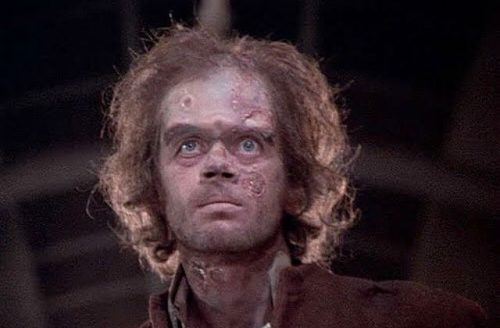
.
HELLTER: What was your relationship like with Frankenstein: The True Story producer Hunt Stromberg Jr.? Can you tell horror fans about him who don’t know who he is? Hunt is major name in horror.
SAM: When I corresponded with Hunt Stromberg Jr. back in the 1970s, I was not fully aware just how deep his love of horror went nor how much we had in common. I didn’t even know he had discovered Vampira – much less that he was gay. Yet, instinctively, I knew we were kindred spirits. His father, Hunt Stromberg Sr., was a major producer at MGM in the 1930s and 40s – with such credits as The Mask of Fu Manchu (starring Boris Karloff who became a family friend), The Thin Man (and several of its sequels), The Women and the Best Picture Oscar winner The Great Ziegfeld. At just 11-years-old, Hunt Jr. met Elsa Lanchester when she was simultaneously shooting Bride of Frankenstein and his father’s production of Naughty Marietta. In the 1947, Hunt Jr. produced the comedy-mystery stage play Three Indelicate Ladies starring Bela Lugosi as the villain. In the 1950s, Hunt Jr. created and produced The Vampira Show starring his discovery Maila Nurmi as Vampira – hostess of horror movies on KABC-TV in Los Angeles that sparked the entire trend of horror hosts that still proliferates today. It all traces back to Hunt Jr.’s idea that these movies needed a goth host with a campy sense of humor. In the 1960s, Hunt Jr. became Vice President of Programming at CBS-TV where he helped develop and oversee such iconic shows as The Munsters, The Twilight Zone, The Alfred Hitchcock Hour, Lost in Space, My Favorite Martian, The Wild Wild West and Gilligan’s Island. He got Boris Karloff to wear his Frankenstein monster makeup again for an episode of Route 66 (that also featured Lon Chaney Jr. as the Wolfman and Peter Lorre). As a producer, Hunt Jr. made Frankenstein: The True Story and The Curse of King Tut’s Tomb, both two-part miniseries for NBC-TV. He tried to produce a big-budget remake of King Kong for Universal that got derailed by the Dino De Laurentiis remake with Jessica Lange. After Hunt Jr. passed away in 1986, his papers were archived at the University of Southern California Cinematic Arts Library. When I was researching Frankenstein: The True Story for the special 2017 issue of Little Shoppe of Horrors magazine devoted to the making of the movie, I dug deep into Hunt Jr.’s archive and discovered my teenage fan letters along with copies of my fanzine Bizarre. It made the hair on the back of my neck stand up! I was not surprised to learn that Bride of Frankenstein was also Hunt Jr.’s favorite movie – and that James Mason’s Dr. Polidori character in Frankenstein: True Story was directly based on Dr. Pretorius from Bride. It all made such perfect sense. Now, I am writing a biography book on the life and career of Hunt Stromberg Jr.
.
.
.
HELLTER: What was it like to work with horror icon Cassandra Peterson aka Elvira Mistress of the Dark for the Elvira’s Haunted Hills film?
SAM: Directing Elvira’s Haunted Hills was a dream come true. Cassandra had seen my first feature film Guilty as Charged and loved it so much, she told me she wanted me to direct her next Elvira film. I figured she was just being polite and it would never really happen. Several years go by and then, out of the blue, I get called for a meeting with Cassandra. She handed me the script of Elvira’s Haunted Hills and said, “It’s a spoof of the Vincent Price-Edgar Allan Poe-Roger Corman movies. Are you familiar with those?” I said, “Honey, you have no idea!” Then, I proceeded to recite verbatim Vincent Price’s monologue from the climax of Pit and the Pendulum – a speech I had serendipitously memorized years earlier for an acting assignment in elementary school. When I finished, Cassandra said, “You’re hired!” We are still close pals to this day.
.
.
.
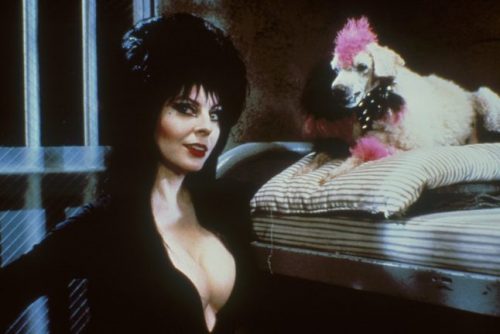
.
HELLTER: I love Elvria!!! What was your favorite scene in Elvira’s Haunted Hills?
SAM: We originally wanted Fabio, the romance novel cover model, to play Adrian, “the stable stud” whom Elvira lusts after. But, he turned it down – which was a blessing in disguise. We were shooting the film in Romania and we decided, “We’ll just cast a hunky Romanian and save the money of flying in another high-priced actor.” We found several local candidates who spoke English but were not sexy enough. Then Gabi Andronaci walked in the room. Cassandra and I both broke out into a sweat. He was gorgeous, muscular, long hair – a total dreamboat! It was too good to be true! Then, he started to read the scene and his English was so bad, we couldn’t understand a word. The first notion we had was that maybe we could dub his dialogue with an actor who spoke better English and hope that the lip movements wouldn’t be too off. But then, inspiration struck us both that he should speak his dialogue in Romanian and we would dub his dialogue into English BADLY, on purpose! Like a bad Italian Hercules movie or spaghetti Western where the actors’ lip movements don’t match the English dialogue whatsoever. We worried that it was kind of a one-joke gag – and Adrian had several scenes. Would the audience laugh once and then groan through the rest of his appearances? Our biggest fears were put to rest at the first test screening. The audience laughed hysterically the first time Adrian opens his mouth and continued laughing uproariously in every one of his subsequent scenes. It was a miracle!
.
.
.
HELLTER: That’s too funny. Describe what Bizarre and Little Shoppe Of Horrors magazines were about?
SAM: I started my fanzine Bizarre in 1972 and did four annual issues that I put together during my summer breaks from school. They progressively became quite massive, almost like books. I tried to review every single genre movie that had been released that year, plus interviews with every genre-related person I could bamboozle – including Christopher Lee, Peter Cushing. Ingrid Pitt, Diana Rigg, and dozens of others. The very same year, 1972, Richard Klemensen of Des Moines, Iowa, started his fanzine Little Shoppe of Horrors which specialized in British horror, particularly Hammer Films. We became pen pals over our shared passion for Hammer. I gave up my fanzine to pursue a career in filmmaking while Dick continued his zine right up to today. It has become one of the most in-depth and respected horror film magazines on the market. Dick remembered how passionate I was about Frankenstein: The True Story, so when he decided to cover the movie in Little Shoppe of Horrors #38, he asked if I might want to guest-edit and write the issue. I leapt at the chance – and now I am very proud that my 50,000-word chronicle “The Epic Untold Saga Behind Frankenstein: The True Story” published in Little Shoppe of Horrors #38 has won the Rondo Award for Best Article of the Year. I got Anne Rice to do the Foreword for the issue because Frankenstein: The True Story directly inspired her to write Interview with the Vampire. I got Mark Gatiss (of Sherlock fame) to contribute an essay called “Queer Frankenstein” detailing the gay subtext in Frankenstein: The True Story. In addition to Jane Seymour, I interviewed 20 cast and crew members including Leonard Whiting, David McCallum and the co-screenwriter Don Bachardy. I unearthed a never-before-published essay on the writing of the script by Christopher Isherwood (Cabaret) and his lover Don Bachardy that Don allowed us to publish for the very first time anywhere. I persuaded LGBTQ activist and politician James Duke Mason (grandson of James Mason and son of Belinda Carlisle of the GoGo’s) to write an essay about his grandfather’s fierce portrayal of the gay Dr. Polidori. The entire issue is one surprise after another – 120 pages, 400 photos, and a triple-foldout cover by Rondo Award Artist of the Year Mark Maddox. You simply have to see it to believe it. And you can order one at www.littleshoppeofhorrors.com Shameless plug. Check!
.
.
.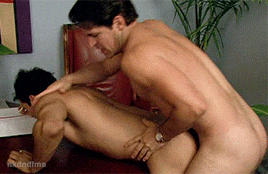
.
HELLTER: I will make sure I check that site out. Thanks for the link. What made you want to do a gay horror tv series Dante’s Cove?
SAM: As an openly gay director and a huge fan of horror, Dante’s Cove was a grand opportunity to marry both of these passions in an overt way. Forget the subtext. Now we could explore the eroticism full-front and center. It was Dark Shadows meets Queer as Folk.
.
.
.
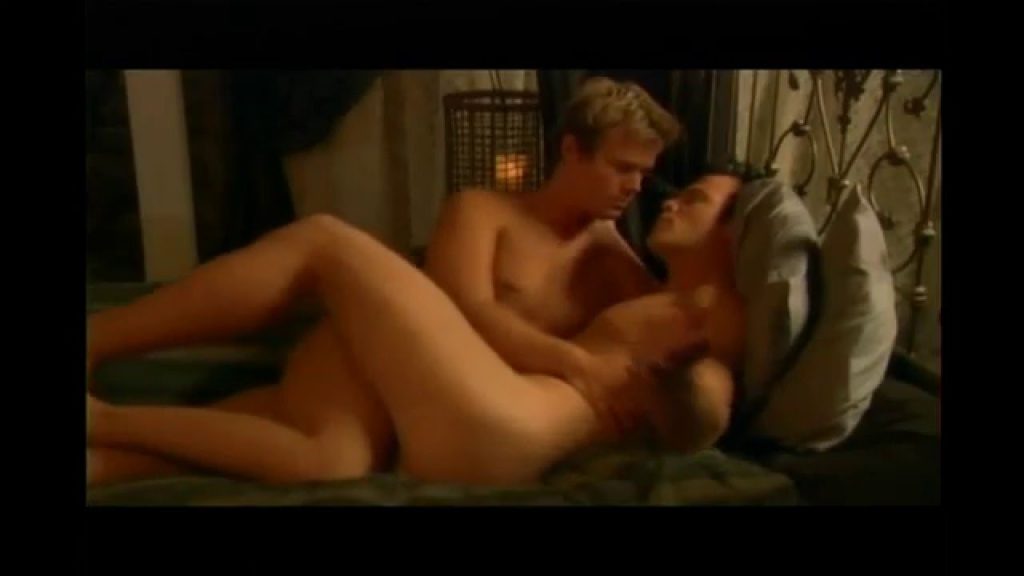
.
HELLTER: I am so happy you made this series, I love it. Love how you made a gay horror tv series. Brilliant. For people who aren’t familiar with Dante’s Cove. Can you tell the horror fans what Dante’s Cove is about?
SAM: Dante’s Cove is a supernatural witchcraft series set on a mysterious island populated mostly by gay men, lesbians and bisexuals — with straight people in the minority. It turns everything on its ear and treats homosexuality as the norm.
.
.
.
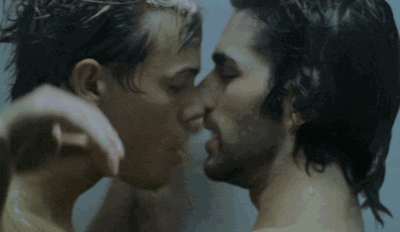
.
HELLTER: The series centers around Toby played by the talented Charlie David and Kevin played by Gregory Michael. The evil forces are trying to get Kevin. What was it like casting and working with both Charlie and Gregory?
SAM: Both were already cast by the time I came aboard. I loved working with them. It was an interesting dynamic given that, in real life, Charlie is openly gay and Gregory Michael is straight. Charlie has gone on to be a producer, director, writer and mogul of his own company – mostly producing LGBTQ-related projects.
.
.
.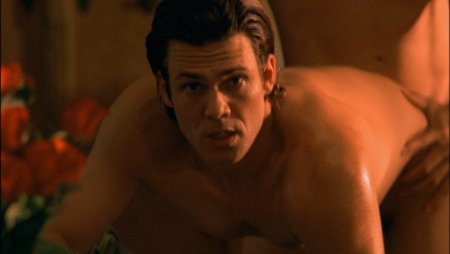
.
HELLTER: I saw some of Charlie’s recent work. Very good. My favorite part, the villains. Tracy Scoggins and William Gregory Lee did amazing jobs at playing villains. How was your experience working with both of them?
SAM: Tracy Scoggins (of Dynasty and Lois and Clark fame) played Grace, the head witch of the coven on the island. Perpetually dressed to the nines and loaded with sardonic asides, Tracy described her character as “a cross between Joan Collins and Barnabas Collins.” William Gregory Lee was just as delicious and mischievous. He and Tracy bonded as friends behind the scenes. Not lovers – to my knowledge – but more like brother and sister soul mates. They understood each other – and each other’s characters. They had terrific chemistry. I adored working with them.
.
.
.
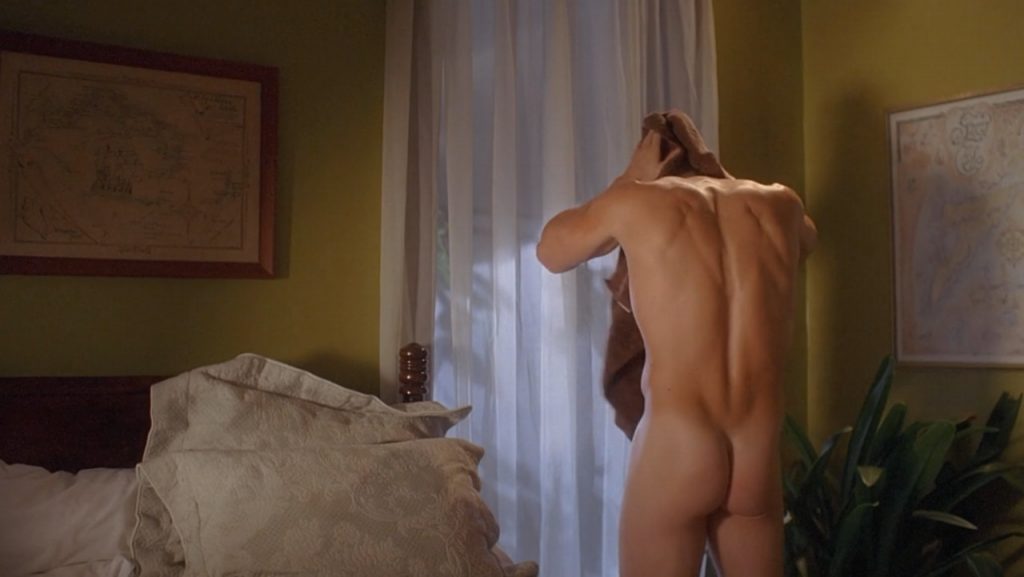
.
HELLTER: You also feature a very young and often shirtless Stephen Amell on the series. Was this one of Amell’s first acting gigs and did you ever think Stephen would go on to be this huge star that he is now as Arrow?
SAM: Our first season featured Stephen and he was not just shirtless in our series – he also exposed his bare butt in one scene that appears in the title sequence. Stephen was an absolute pleasure to work with. When Season 2 came along, he bowed out because a huge opportunity had arisen for him to co-star in Closing the Ring opposite Shirley MacLaine and Christopher Plummer for Oscar-winning director Richard Attenborough (Ghandi). We totally understood and wished him well. It’s been nothing but uphill for him ever since.
.
.
.
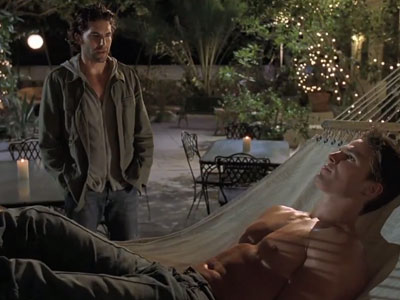
.
HELLTER: That’s an amazing bare butt to. Do you still stay in touch with the cast including Stephen Amell?
SAM: We’ve mostly lost touch, sorry to say. It happens in this business. You have a whole new family with every project. I occasionally speak to Tracy Scoggins and I keep in touch with Charlie David via Facebook. When Arrow was in its first season, I read an interview with Stephen Amell in which he said some very nice things about working with me on Dante’s Cove. I contacted him through his social media to thank him and he kindly responded.
.
.
.
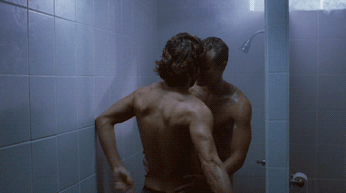
.
HELLTER: That’s awesome. This show had everything from gay sex, lesbians, hot shirtless men, witches, warlocks, magic, spells, etc. A true horror series. What made this horror series special is that it was made for the gay audience. What are your thoughts on the show and the impact it had on Gay Horror?
SAM: It was a rare opportunity to explore horror with gay characters – and NOT be saddled with gay or political issues. It was all totally matter-of-fact. I also think it heavily influenced and inspired shows and movies like True Blood, the Twilight movies, and many other descendants.
.
.
.
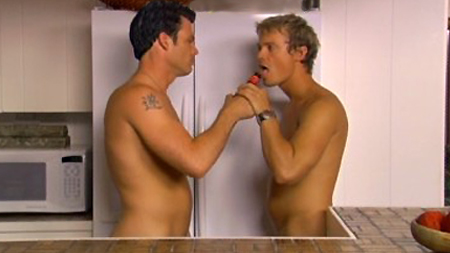
.
HELLTER: Are you happy with the successful 3 Season run that Dante’s Cove had? A couple years back there was rumors going around about a Dante’s Cove Season 4 with a new cast. Whatever happened with that?
SAM: We desperately wanted to continue the series but production funding dried up for a variety of reasons beyond our control. There are two sets of scripts for a fourth season. One set of scripts continues the story right where we left off, with the same characters. The other set of scripts is basically “Dante’s Cove: The Next Generation” – starting fresh with a whole set of new characters – with the one exception of Grace, the lead witch, who would have been portrayed by Tracey Scoggins again. The gay network that owns the rights to the series, HereTV, no longer has the funding it once had for production. They tried a Kickstarter campaign to raise funds from fans but it didn’t reach its goal. That pretty much put the nails in the coffin. So, at least for the foreseeable future, I don’t think there will be more seasons of Dante’s Cove.
.
.
.
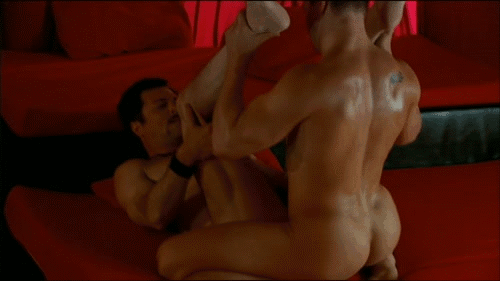
.
HELLTER: That’s sad. I really want to see another season of Dante’s Cove. Maybe I can pass the word around to see if anyone can help make that happen. Do you think the other gay horror series The Lair tried to copy a lot from Dante’s Cove?
SAM: The Lair was absolutely inspired by Dante’s Cove. The creator-director of The Lair, Fred Olen Ray, is a good friend and colleague. His wife Kim Ray was the Line Producer of Seasons 2 & 3 of Dante’s Cove and Fred helped us as a Second Unit Director, Stunt Coordinator and Special Effects Artist. He’s amazing! During our second season, Fred pitched The Lair to HereTV and got it going simultaneously as a sort of unofficial quasi-spinoff. We even had crossover characters from The Lair appear in Dante’s Cove – the sex club managers played by David Moretti and Dylan Vox.
.
.
.
HELLTER: Anything else you would like to discuss or promote?
SAM: These days, aside from writing articles and books, I am busier than ever directing thrillers and Christmas movies for channels like Lifetime and Hallmark.
.
..
HELLTER: Thank you for being a guest on Gruemonkey.
SAM: The pleasure is mine! Thank YOU!
.
.
.
Sam’s credits on IMDB:
http://www.imdb.com/name/nm006787/
Sam’s bio on Wikipedia:
http://en.wikipedia.org/wiki/Sam_Irvin
Little Shoppe of Horrors magazine #38 featuring
The Epic Untold Saga Behind
Frankenstein: The True Story (1973 NBC-TV miniseries)
by Sam Irvin (Special Project Editor of this issue)
http://www.littleshoppeofhorrors.com/
Website for Sam’s book
Kay Thompson: From Funny Face to Eloise:
www.KayThompsonWebsite.com
.
.
.
.
.
.

